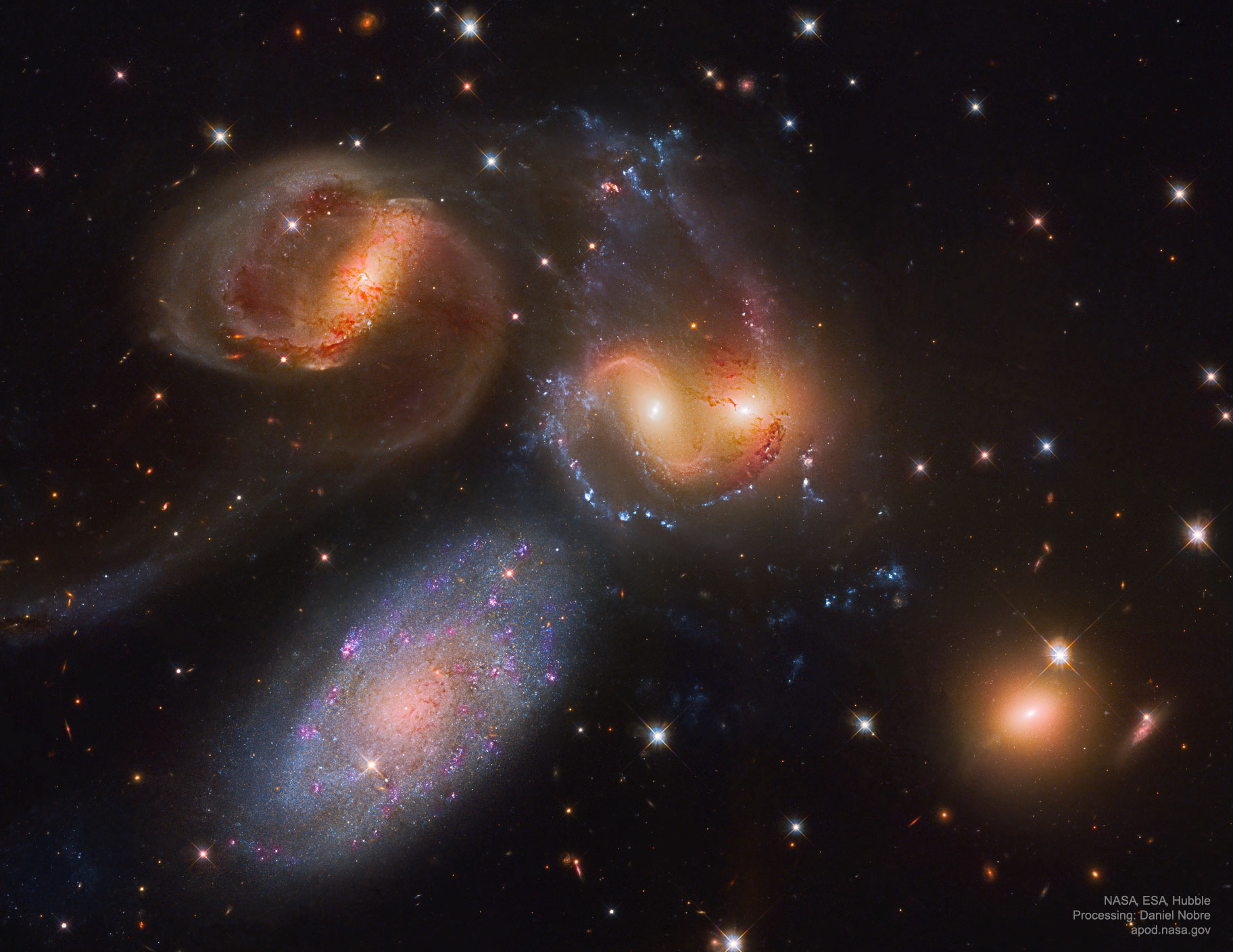来自哈勃的斯蒂芬五重奏
2019 June 3
来自哈勃的斯蒂芬五重奏
图片来源:NASA, ESA, Hubble; Processing: Daniel Nobre
说明:这些大星系是什么时候开始跳舞的?事实上,斯蒂芬五重奏中的五个中只有四个被锁定在一个反复发生在3亿光年之外的近距离碰撞的宇宙探戈中。在哈勃太空望远镜最近重新处理过的这幅图像中,我们很容易就能发现一些奇怪的星系——相互作用的星系,NGC 7319、7318B、7318A和7317(从左到右),它们的颜色偏黄。它们还倾向于在破坏性引力潮汐的影响下生长扭曲的环和尾巴。大部分偏蓝的星系,位于左前下方的大型星系NGC7320,距离其它三个星系大约4000万光年,因此不属于相互作用的星系。数据和建模表明,NGC 7318B是一个相对较新的入侵者。最近发现的围绕着斯蒂芬五重奏的古老红星光环表明,这些星系中至少有一些已经相互作用超过10亿年。斯蒂芬五重奏可以通过一个中等大小的望远镜朝着朝着飞马星座(天马座)方向看到。
Stephan’s Quintet from Hubble
Image Credit: NASA, ESA, Hubble; Processing: Daniel Nobre
Explanation: When did these big galaxies first begin to dance? Really only four of the five of Stephan’s Quintet are locked in a cosmic tango of repeated close encounters taking place some 300 million light-years away. The odd galaxy out is easy to spot in this recently reprocessed image by the Hubble Space Telescope — the interacting galaxies, NGC 7319, 7318B, 7318A, and 7317 (left to right), have a more dominant yellowish cast. They also tend to have distorted loops and tails, grown under the influence of disruptive gravitational tides. The mostly bluish galaxy, large NGC 7320 on the lower left, is in the foreground at about 40 million light-years distant, and so is not part of the interacting group. Data and modeling indicate that NGC 7318B is a relatively new intruder. A recently-discovered halo of old red stars surrounding Stephan’s Quintet indicate that at least some of these galaxies started tangling over a billion years. Stephan’s Quintet is visible with a moderate sized-telescope toward the constellation of Winged Horse (Pegasus).

